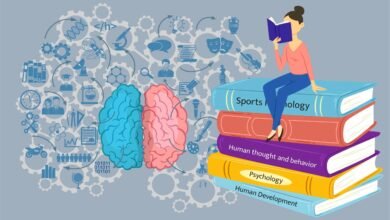What Is Anti-Racism?

What Is Anti-Racism?
The act of actively recognising and combating racism is known as anti-racism. Anti-racism aims to combat racism and actively alter the laws, practises, and attitudes that support racist beliefs and behaviour.
Action is at the heart of anti-racism. It involves taking action to combat racism at the interpersonal, societal, and structural levels. Although it is not a novel idea, the Black Lives Matter movement has helped draw attention to the significance of anti-racism.
Why Anti-Racism Is Important
Systemic racism is an issue because it permeates every aspect of our lives. We inherit it at birth. Our communities, including our schools, the legal system, the executive branch, and hospitals, are profoundly ingrained with it. People frequently fail to recognise how policies, institutions, and systems unduly benefit some and disadvantage others because it is so widespread.
People frequently make the error of thinking that simply not being “racist” is sufficient to end racial prejudice. The issue with this viewpoint is that White individuals frequently aren’t aware of their own implicit biases. People frequently lack a thorough understanding of the institutional and systemic problems that support White supremacy and support racist practises, attitudes, and laws.
But I’m not racist” is another way that people can avoid taking part in anti-racism. It’s a way of saying, “That’s not my problem,” while ignoring the fact that even non-racist individuals profit from a system that is skewed against others.
Another issue is that, according to research, those who think they are not prejudiced are sometimes far more so than they realise. According to one study, persons who identified as strongly supporting racial equality also tended to exhibit considerable unconscious biases against Black people.
Ibram X. Kendi, a renowned expert on race and racial discrimination, addresses many of the specific attitudes held by both White and non-White people that contribute to the maintenance of racism in his book How to Be an Antiracist. According to Kendi, it is impossible to be “not racist” if you have unfavourable opinions about entire racial, ethnic, or cultural groupings of individuals.
The only way to remove racism is to continuously identify and define it — and then demolish it, as Kendi demonstrates in How to Be an Antiracist.
IMPORTANT
The subtle, pervasive aspects of racism that go unnoticed by most people but are so important in maintaining racism include these. Because these views are frequently so deeply ingrained, it often takes the capacity for intense self-criticism to evaluate and question those attitudes, which is why many don’t see it.
Understand What Racism Is
People frequently only consider individual behaviours while discussing racism. The phrase can bring up visions of neo-Nazis with shaved heads or people wearing White cloaks. Even if both exhibit racism, it’s crucial to understand that the practise isn’t always obvious.
We are prevented from identifying and addressing our own biassed beliefs, attitudes, and behaviours when we believe that racism is always so overt.
Racism, for instance, is described as “a belief that race is the main determinant of human qualities and capacities and that racial variations produce an inherent superiority of a specific race” in the Merriam-Webster dictionary. After the George Floyd demonstrations, the dictionary’s editors decided to clarify the role by updating the term in response to a reader’s request.
The Effects of Racism
In order to combat racism, one must also endeavor to comprehend how racism and race influence individuals. According to research, racism has a wide range of detrimental repercussions on people, families, communities, and even society. You might not have realized that racism has an effect on the healthcare, education, job, and housing sectors.
Economic Disparities
Numerous factors, including racism, affect economic standing. Access to jobs and education is discriminatory for people of colour. For instance:
- Black households are often 13 times poorer than White households are.
- According to a 2016 study, only 44% of Black households and 45% of Latino households owned homes, compared to 72% of White households who did.
- In comparison to White bachelor’s degree holders, Black bachelor’s degree holders make much less money.
- The median salary for White workers was around 23% greater in 2021 than it was for Black and Latino workers, according to data from the Bureau of Labor Statistics.
Employment Inequality
In comparison to their White colleagues, members of ethnic minorities are less likely to receive job offers. Compared to White workers, Black workers are twice as likely to be unemployed. In accordance with their educational and skill levels, Black employees are more likely to be underemployed, according to statistics.
Incarceration Disparities
According to statistics, White and non-White defendants are treated quite differently by the criminal justice and legal systems. Sentences are lengthened and made more severe for members of ethnic minorities. For instance, White offenders are given roughly 20% shorter sentences for the same offences than Black men.
Healthcare Inequality
For a variety of reasons, racial discrimination is bad for your health. Racism has been linked to ill health, both physical and mental, according to research. BIPOC are less likely to receive proper healthcare, according to studies, due to both limited access to care and subpar patient experiences.
Anti-racism requires a thorough understanding of both these problems and how institutional racism leads to these discrepancies. One cause of the stark differences in homeownership is redlining, which is the systematic denial of services. The likelihood of providing financial services, such as loans and insurance, to people of colour is lower.
The social and economic imbalances that are a sign of pervasive systemic racism are a result of all of these and many other variables.
Examine Your Own Biases
To combat racism, you must critically examine your own attitudes and behaviour. According to research, even those who believe in racial equality frequently harbour racist ideas without realising it. 1 Implicit biases, or attitudes that are primarily unconscious but nevertheless influence behaviour, frequently account for this gap. For instance:
- Even if a person actively supports racial fairness, they may nevertheless harbour subliminal prejudices towards other races that are frequently based on internalised stereotypes.
- While approximately 70% of White respondents report that they have no preference between Black and White, data from the Implicit Association Exam (IAT) has indicated that roughly the same amount of respondents showed some form of preference towards Whites on the test.
- Such biases may affect how people behave. One study found that having implicit racial biases made doctors less likely to recommend appropriate treatment to Black patients.
The way the brain functions is what leads to these unconsciously instinctive linkages. Our brains want to develop categories and short cuts that assist us in making sense of a complex world that overwhelms us with information. The issue is that these short cuts may mislead us, resulting in bias and impairing our ability to think critically.
Take the Implicit Association Test for free with Project Implicit if you’re curious to discover more about your own implicit biases.
How to Practice
According to Kendi, being anti-racist necessitates having the capacity to critically analyse your own prejudices. Many people now recognise the urgent need for anti-racism thanks in large part to the events that gave rise to the Black Lives Matter movement.
Learn About Racism
Learn about the causes and effects of racism through conducting research. Learn how racism persists today and affects the social, political, and economic landscape. Books and online resources are two excellent ways to learn more about the causes and consequences of racism. Some examples are:
- X. Kendi’s How to Be an Antiracist
- Ijeoma Oluo’s So You Want to Talk About Race
- Ibram X. Kendi created An Antiracist Reading List for the New York Times Code Switch, a
- programme from NPR Racial Equity Tools.
Listen
Pay attention to what supporters of racial justice have to say about racist practises and laws. Just because you haven’t personally seen or seen these things doesn’t mean they don’t occur. Consider any actions or beliefs you may have had that may have been motivated by racism.
For instance, black women experience both sexism and racial prejudice. Additionally, compared to other people of colour, Black and Indigenous people frequently experience discrimination differently.
People can develop an anti-racist viewpoint by listening to these experiences and considering how legislation may effect people differently.
Participate
Participate in activities aimed at eradicating racial injustice. There are some actions you can take to help change things:
- Giving to and working for causes that oppose injustice
- Involvement in social movements
- Boosting minorities’ voices
- Voting on community-related issues
- Participating in politics through running for office or sitting on committees
IMPORTANT
Work to affect change wherever you have the ability to do so. Utilize your influence and voice to bring about change in your neighbourhood, business, school, and local government.
Discuss Racism
Discuss the effects of racism with your friends and family. When you observe racism, call it out. Social media posts expressing your support can be beneficial, but having in-person interactions with the people in your life can frequently be more persuasive and effective.
Talk to Your Kids
Raising children to be anti-racist requires starting a conversation with them about race and racism. Avoiding discussions about ethnicity and skin tone can cause kids to believe that these subjects are offensive or taboo.
It may be beneficial to add multicultural novels to your child’s reading list. Books can also be helpful for guiding conversations about difficult topics such as slavery and segregation.
Seek Diversity
Seeking diversity in your life is one strategy for overcoming racist attitudes. If all you do is hang out with individuals who look like you, think like you, and act like you, it’s difficult to develop new perspectives. If the only individuals you see in the media are people who are similar to you, it is also difficult to learn about different people.
According to one study, merely residing in more diverse locations makes people more tolerant and less racist. People obtain a more representative and realistic perspective through direct experience as opposed to basing beliefs on racial stereotypes.
Impact of Anti-Racism
Anti-racism is an ongoing process, therefore it has the capacity to influence people on a personal, social, and societal level.
Among the possible outcomes are:
- Removing barriers to work enhancing educational attainment and experience
- Lowering racial inequities in the criminal justice system enhancing risk-sensitive juvenile
- Interventions
- Increasing community resource availability
- Promoting social and political engagement
- Lowering racial violence, hate crimes, and bullying
IMPORTANT
It’s critical to keep in mind that combating racism is a continuous process. A lifetime dedication to the cause of racial justice and equality.
A Word From WinAspire
Reflection and action are necessary for anti-racism. It entails examining racism on a personal, institutional, and structural level in addition to your own attitudes and actions. Making decisions and taking activities that promote equality is what it means to be anti-racist.











